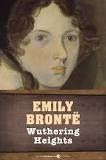Yes, I had the flu shot. No, it didn't keep me from having the flu. What it did was put me to bed too ill to read, so I turned on the television.
One of the programs that rolled across my screen was What Would You Do? This show is an American news magazine and hidden camera series that has been hosted by news correspondent John Quinones since 2008. The idea is that actors perform scenes of conflict or illegal activity in public settings. Hidden cameras videotape the scenes and focus on whether or not bystanders will intervene. At the end, Quinones appears and interviews the bystanders about why they did or did not step in.
 |
| John Quinones |
Some of the scenarios have been:
A mother and her children are unable to afford their dream
Christmas tree, leaving the children visibly upset. Many of the customers step in to comfort them or buy the tree for them.
While having dinner in a restaurant, a boy scout reveals to two other scouts that he is gay. Diners step in to offer advice when the two other scouts threaten to tell their scout master.
A man accidentally drops an expensive bottle of wine in the ABC store and denies it, even pointing blame at other customers.
A young pregnant woman offers to sell her baby to people who pass by on the street.
Usually, at least one or two witnesses will step in and attempt to
mediate the situations.
I doubt seriously that I'll watch the show much now that I am feeling better, but it intrigued me because when my sons were younger, they were forever cautioning me, "Mom, someone will get mad at you for telling their children to behave."
Yes, I confess. As a teacher, I had a tendency to suggest ideas for occupying children who were misbehaving in public. Actually, I've had parents thank me when I offered paper and colored pencils with a suggestion that the child might like to draw while waiting for dinner to be served in a restaurant instead of crawling around on the floor beneath my own table. My own children were afraid I would offend someone, but most people smiled and thanked me.
 |
| A child's temper tantrum can spoil dinner at a restaurant. |
Back to the topic. The Sunday before Christmas, my family attended a live theater production of Dickens's A Christmas Carol as adapted by my friend James H. Kirk. Sitting beside me were a Callie fan and her daughter who is in middle school.
The daughter told me that she's writing a book and asked, "How many pages should I make it?"
My response was, "Don't decide a number of pages. Make the book as long as it takes to tell your story."
The next question came from the mother: "What is the most important advice you can give to a beginning writer?"
That's a hard one, and my answer depends upon the age and writing experience of the person asking the question. Most of the time, I answer that question with, "Learn all the rules so you'll know what you're doing when you break them."
My title today is What Would You Do? but what I want to know is What would you say?
My question for each of you: What is the most important advice you can give to a beginning writer?
Until we meet again, please take care of . . . you.

















